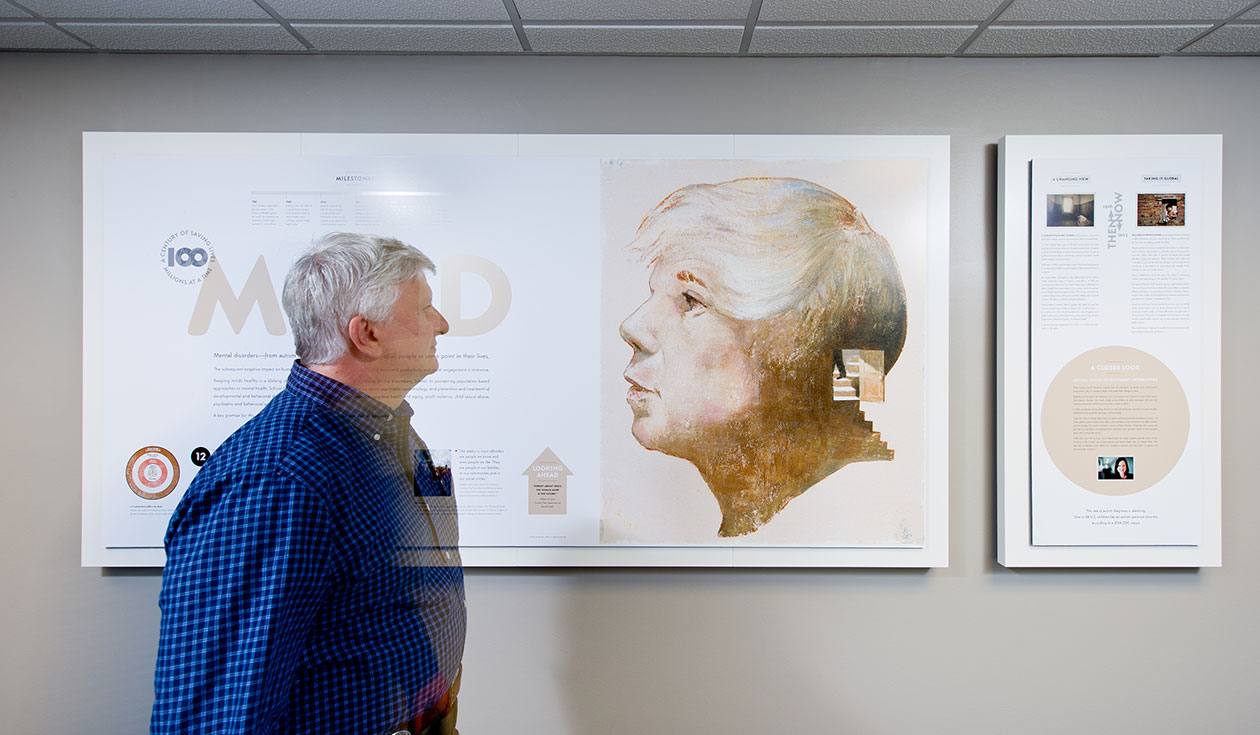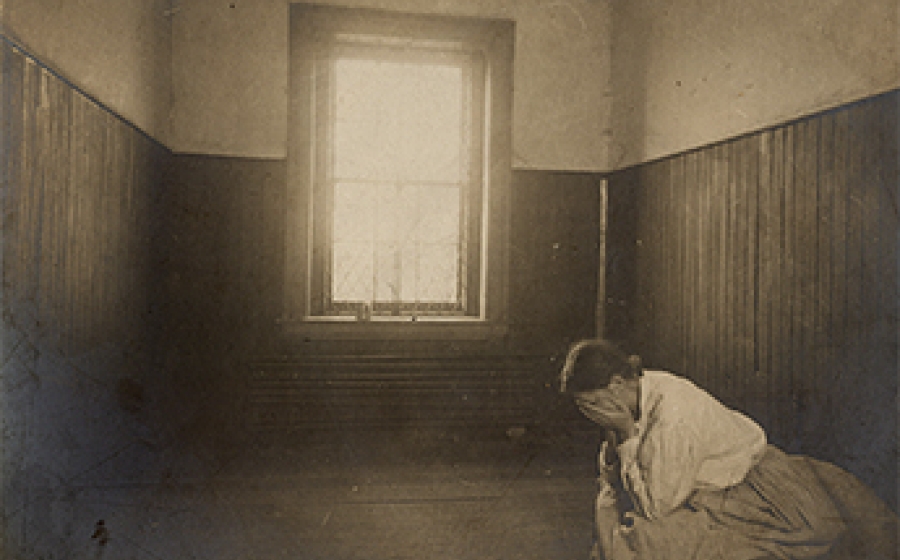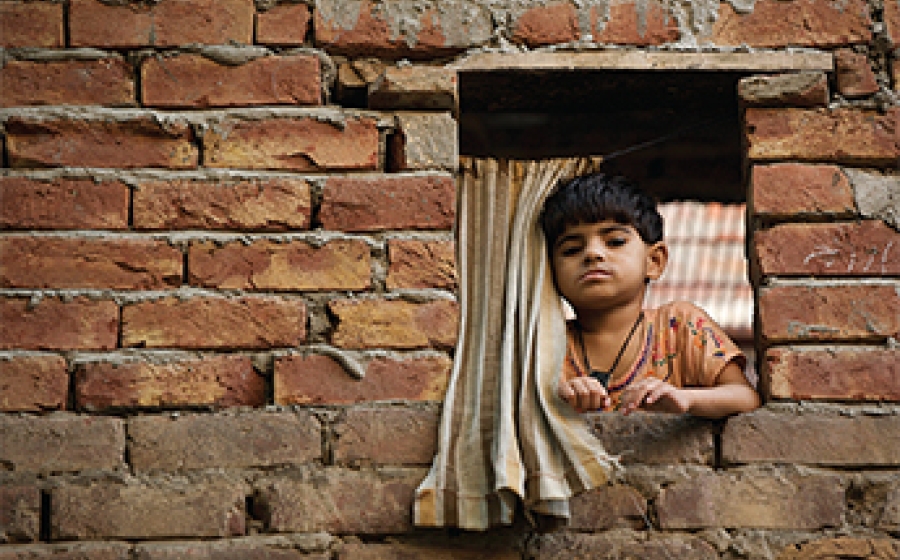Mind

“Forget about space. The human mind is the future.”
William W. Eaton - Former Chair Department of Mental Health
Mental disorders - from autism to depression - affect up to half of all people at some point in their lives.
The subsequent negative impact on human dignity, physical health, emotional fulfillment, economic productivity and social engagement is immense.
Keeping minds healthy is a lifelong challenge for individuals and a research priority for the Bloomberg School. In pioneering population-based approaches to mental health, School faculty, have done defining work in substance abuse, psychiatric epidemiology, and prevention and treatment of developmental and behavioral disorders. Today, the School is advancing research in cognitive health and aging, youth violence, child sexual abuse, psychiatric and behavioral genetics, and global mental health.
A key premise for this diverse work: The quality of a life is no less important than its longevity.
Timeline
1941
1941
Paul V. Lemkau is appointed founding director of the Division of Mental Hygiene, the world’s first academic unit devoted to a public health approach to mental illness.
1949
1949
Robert H. Felix, MD, MPH ’42, is named the first director of the National Institute of Mental Health, which will shape national mental health policy.
1954
1954
Abraham Lilienfeld, MD, MPH ’49, Marcia Cooper, ScD ’49, and Benjamin Pasamanick conduct the first research on the epidemiology of developmental disabilities.
1981
1981
Using data from Baltimore, William W. Eaton and colleagues estimate that one third of Americans experience at least one type of mental illness during their lifetimes.
1985
1985
Sheppard G. Kellam launches a study that will document the impact of classroom interventions in reducing the risk for violence, suicide and incarceration later in life.
1992
1992
Philip Leaf begins a collaboration that expands community-based mental health services for children to help break the cycle of violence in East Baltimore.
Then & Now

Then: A Changing View
A FORMER PSYCHIATRIC PATIENT and a taciturn, Swiss-born psychiatrist transformed the way Americans think of mental illness.
In 1907, Clifford Beers penned 80,000 words about his brutal experiences in mental institutions. He asked esteemed Johns Hopkins psychiatrist Adolf Meyer to review the manuscript. Beers sought to ignite institutional reform, while Meyer wanted to broaden mental health treatment and prevention.
Published in 1908 to great acclaim, A Mind That Found Itself became a seminal mental health text and helped to define mental illness as a disease.
As mental health emerged as a key determinant of the public’s health, researchers began to study it in populations. In 1932, the School and the Baltimore City Health Department established the Eastern Health District and relied on it to conduct one of the earliest mental health epidemiological studies. The survey recorded the numbers of “psychotics, delinquents and the maladjusted” clustered in areas with saloons, brothels and gang hangouts.
One of Meyer’s students, Paul V. Lemkau, MD, MPH ’41, used the study to estimate the number of people with mental disorders in the country. He wrote the first textbook on mental hygiene and public health and, in 1961, became founding chair of the School’s Department of Mental Hygiene, now Mental Health.
It remains the only department of its kind in a school of public health in the nation.

Now: Taking It Global
MILLIONS OF PEOPLE SUFFER psychological trauma caused by conflict, dislocation, torture or sexual abuse. Others are blindsided by the onset of crippling mental disorders.
Stigma and lack of access to treatment force many to endure their pain in silence. The situation is especially dire in resource-poor countries, where more than 75 percent of people with mental disorders receive no treatment. These countries may have only a handful of psychiatrists and psychologists serving populations numbering in the millions. In some places, the mentally ill are chained to trees or concrete blocks.
Taking a leadership role in this issue, the School is advancing research and advocating for the mentally ill’s human rights.
The Applied Mental Health Research group, supported by USAID’s Victims of Torture Fund, has worked with street children in Georgia, Albania and Mexico, sexually abused children in Zambia, villagers caught in the crossfire of warring factions in Indonesia, and distressed populations in Uganda, Cambodia and Haiti.
Faculty are working to bring scientifically proven, low-cost mental health interventions—such as group therapy led by a trained community health worker—to those afflicted by war, genocide or natural disaster. The goal is to integrate evidence-based, culturally sensitive mental health services into primary care and community health systems.
The overall mission: Helping the mentally ill move toward emotional, psychological and social well-being.
A CLOSER LOOK

Autism: Child Development Interrupted
What causes autism? Research suggests that the interaction of genetic and environmental components is key. Or perhaps it begins with subtle brain changes in utero.
Regardless of the origins, few diagnoses carry more anxiety and anguish for parents than autism. The enigmatic disorder robs bright, verbal young children of newly developed skills and may suddenly reverse their ability to communicate or relate to others.
In 1943, Leo Kanner, the founding director of child and adolescent psychiatry at Johns Hopkins, published the first systematic description of the disorder.
Today, the School’s Wendy Klag Center for Autism and Developmental Disabilities promotes and unifies global research and education efforts, and evaluates services and policies that affect children and their families. The Center is named in memory of Dean Michael J. Klag’s late wife, a passionate advocate for individuals with developmental disabilities and a devoted mother to their daughter Sarah, who is living with autism.
“With CDC and NIH funding, we’ve helped build the largest epidemiologically based studies of autism in the country,” says Center director and Mental Health chair M. Daniele Fallin. “We have also contributed to the official U.S. prevalence estimates and information on genetic and environmental risk factors.”
Display Credits
Main Illustration
- Gerard DuBois
Charts
- SDYM
- From left to right, first illustration: Gerard DuBois, second illustration: Dung Hoang.
Then and Now
- Then: Crying Woman Photo: Courtesy of the Maryland State Archives.
- Now: Boy in Brick Window: Shehzad Noorani
A Closer Look
- Daniele Fallin: Chris Hartlove
